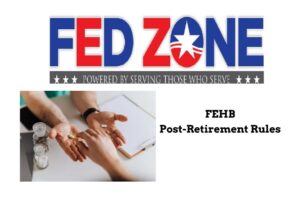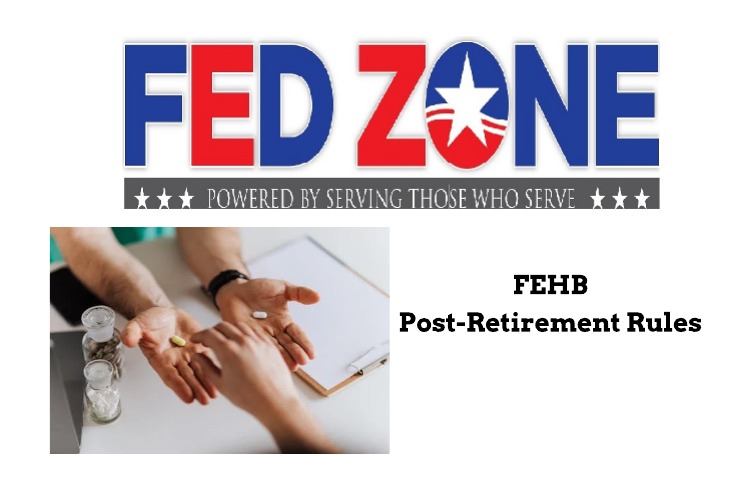Edward A. Zurndorfer
Each year, during the benefits “open season”, employees and annuitants make decisions regarding which health, dental and vision insurance plans they want to be covered by during the upcoming plan year that starts in the coming early January. This column is the third of eight FEDZONE columns discussing choices that employees and annuitants have to make during the annual benefits “open season”, which this year runs from Nov. 9, 2020, through Dec. 14, 2020.
Employees are eligible to continue their Federal Employee Health Benefits (FEHB) program health insurance coverage after they retire from federal service. It is important for employees to understand that federal annuitants who carry their FEHB program benefits into and throughout retirement pay the same percentage of the FEHB health insurance plan total premiums (in particular, on average 25 to 28 percent) as they paid as employees. The federal government pays the other 72 to 75 percent of an annuitant’s FEHB program premiums, no matter what plan and what type of FEHB program enrollment (self only, self plus one, or self and family).
Employees are eligible to continue health benefits coverage upon retiring from federal service if they fulfill the following two requirements:
- The employee is entitled to retire on an immediate annuity under either a CSRS or FERS retirement. The FERS “Minimum Retirement Age + 10” or “Minimum Retirement Age + 20” retirement options are also included.
- The employee has been continuously enrolled (or covered as a family member) in any FEHB program plan(s) for the five years of service immediately before the date the annuity starts, or for the full period(s) of service since the employee’s first opportunity to enroll in the FEHB program (if less than five years).
An annuitant can also change FEHB health insurance plans annually during the annual benefits “open season”, as well as continue full FEHB coverage on eligible family members (spouses and children under the age of 26).
Note that when an employee elects to either not enroll or to cancel his or her enrollment, the employee must certify by his or her signature on the Health Benefits Election form (Form SF 2809) that he or she understands the effect it has on eligibility to carry coverage into and throughout retirement.
What does service time Include for purposes of FEHB program requirements?
For purposes of continuing FEHB coverage into retirement, “service time” means time in which an individual served in a position in which the individual was eligible to be enrolled. The individual is not required to have been an enrollee continuously, but the individual must have been continuously covered by an FEHB enrollment. Continuous coverage includes:
- Time covered as a family member under another person’s FEHB enrollment;
- Time covered under the Uniformed Services Health Benefits Program, also known as TRICARE, CHAMPUS, or CHAMPVA, as long as the individual was covered under an FEHB enrollment on the day of retirement.
Breaks in service are not counted as interruptions when the five years of service requirements is determined, as long as the individual reenrolls within 60 days after his or her return to federal service. The following three examples illustrate:
Example 1. Charles elected FEHB coverage on Feb. 11, 2012 and had a break in service from Jan. 1, 2016 through Dec. 31, 2017. Immediately upon his return to federal service, he again elected to enroll. He retires on Dec. 31, 2019. He is eligible to continue his to continue his FEHB health benefits into retirement since he has been continuously enrolled for the five years prior to retirement.
Example 2. Carol elected not to enroll in the FEHB program upon her initial employment in 1990. She left federal service early in 2015 and was rehired later in 2015, electing at that time to enroll in the FEHB program. When she retired in 2018, she was not eligible to continue FEHB health benefits into retirement since she was not covered for the five years of service before her retirement. Her 2015 rehire date does not count as her first opportunity to be insured because of her prior employment in which she elected not to enroll in the FEHB program.
Example 3. Tom retired from private industry in Aug. 2015 at the age of 60 and had health insurance from his former employer through Dec. 31, 2015. Tom decided to get a federal job for the main purpose of getting the FEHB health insurance benefits for himself and his wife for their retirement years. He was hired into federal service with a service computation date of Nov. 15, 2015. Knowing that his private health insurance would be terminating Dec. 31, 2015, Tom elected during the 2015 FEHB program “open season” to enroll in a FEHB program health insurance plan that became effective Jan. 7. 2016. Tom is eligible to retire from federal service as of Nov. 15, 2020 at age 65 with five years of federal service. However, if Tom wants to keep his FEHB coverage throughout retirement, the earliest date he can retire is Jan. 7, 2021. This is because as of Jan. 7, 2021, would have the earliest date Tom would have five continuous years of FEHB program enrollment.
Other Issues That May Affect Eligibility to Retain FEHB Enrollment in Retirement
- Late election. Any individual is considered to have been continuously enrolled when allowed to make a late election after the individual’s employing office determined that the individual was not able to timely enroll for reasons beyond the individual’s control. The following example illustrates: Albert’s employing office notified him on March 20, 2013 that he could make a late election to enroll in the FEHB program. He promptly enrolled and on Apr.30, 2018 he retired. He is eligible to continue his health benefits into retirement since March 20, 2013 is considered to be his first opportunity to enroll.
- Eligibility as a temporary employee. An individual’s decision not to enroll as a temporary employee eligible for coverage under 5 United States Code 8906a does not affect the individual’s future eligibility to continue FEHB program coverage as a retiree. Only service time for which the federal government contributes toward the cost of the FEHB program health benefit counts in determining whether the individual has met the five years of service, or the first opportunity to enroll, requirements to continue coverage as a retiree. Since the federal government does not share in the cost of a temporary employee’s FEHB program enrollment, eligibility to enroll under 5 United States Code 8906a is not considered the first opportunity for purposes of continuing health benefits coverage into retirement.
- Eligibility under temporary continuation of coverage. Enrollment or eligibility for enrollment as a former employee under the FEHB temporary continuation of coverage (TCC) provisions is not considered in determining whether an individual meets the five years of service requirement to continue coverage as a retiree.
At retirement, an employee’s employing office will tentatively determine if the employee is eligible to continue FEHB enrollment in retirement. OPM’s Office of Retirement Programs will review the retirement and health benefits documents and make a final determination of the employee’s eligibility to continue the FEHB enrollment into retirement.

Edward A. Zurndorfer is a CERTIFIED FINANCIAL PLANNER™ professional, Chartered Life Underwriter, Chartered Financial Consultant, Chartered Federal Employee Benefits Consultant, Certified Employees Benefits Specialist and IRS Enrolled Agent in Silver Spring, MD. Tax planning, Federal employee benefits, retirement and insurance consulting services offered through EZ Accounting and Financial Services, and EZ Federal Benefits Seminars, located at 833 Bromley Street – Suite A, Silver Spring, MD 20902-3019 and telephone number 301-681-1652. Raymond James is not affiliated with and does not endorse the opinions or services of Edward A. Zurndorfer or EZ Accounting and Financial Services. The information has been obtained from sources considered to be reliable, but we do not guarantee that the foregoing material is accurate or complete. While we are familiar with the tax provisions of the issues presented herein, as Financial Advisors of RJFS, we are not qualified to render advice on tax or legal matters. You should discuss tax or legal matters with the appropriate professional.
